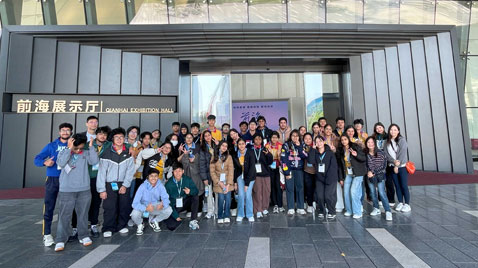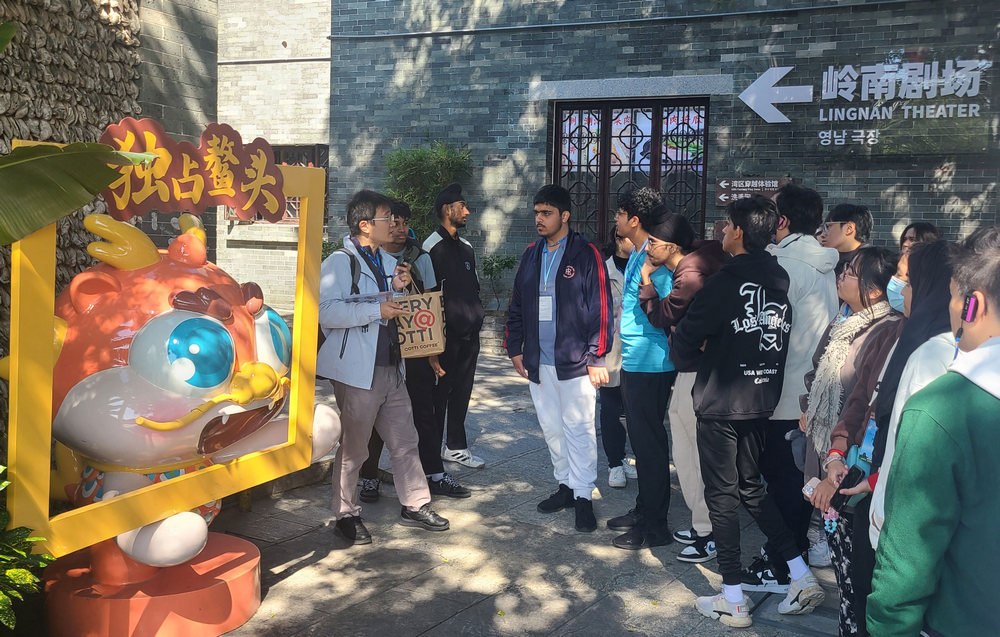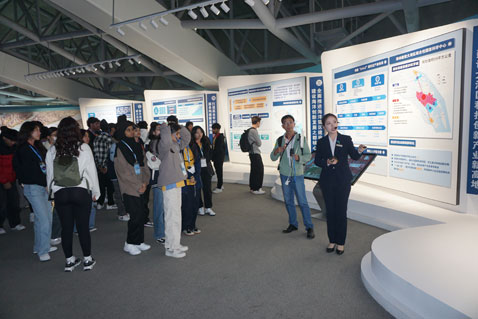學生內地考察學習成果分享
學生心聲節錄(一)
During our recent two-day study tour to the Greater Bay Area (GBA), I had the opportunity to visit Qianhai and Nansha. This was not my first visit to the Mainland, but was of a different kind as the tour focused on economic development and cultural heritage. Before the trip, I felt excited, as I had heard many stories about the rapid development in the Mainland. My previous visits were mostly for sightseeing, but this time I was able to learn and understand more deeply.
One of the most impressive aspects of this trip was the infrastructure. The transportation system in the GBA is incredibly advanced. We took high-speed rail, which made traveling between cities fast and comfortable. The roads and highways were well-maintained, and the traffic flow was smooth. In Qianhai, I noticed modern buildings and green spaces that created a pleasant urban environment. It was fascinating to see how urban planning integrates nature with the cityscape.
Another highlight was the visit to the Guangdong Science Centre. Here, I learned about China's advancements in science and technology. The exhibits were interactive and engaging, which made learning enjoyable. I was amazed by the innovative projects showcased, reflecting China's commitment to research and development. This experience helped me understand how science plays a crucial role in economic growth and the future of young people in the Mainland.
The visit to Yongqingfang stood out as well. This site represents urban renewal, blending traditional architecture with modern uses. It was a lively area where I could experience Cantonese culture. I appreciated how the site preserved its historical values while adapting to contemporary needs. This balance between conservation and modern development can also be seen in Hong Kong, while the pace of change may be different.
Overall, the trip enhanced my understanding of the Mainland's development in various ways. I saw how cities like Shenzhen and Guangzhou are rapidly evolving, focusing on both economic opportunities and cultural preservation. The emphasis on innovation, especially in places like Qianhai, shows that there are opportunities for young people to thrive. While Hong Kong shares similarities in its fast-paced development, the approach to urban planning and cultural preservation can differ significantly.


Classroom learning combined with this field visit made the lessons more impactful. The knowledge we studied about economic development and cultural heritage became real when we witnessed them firsthand. It was enlightening to connect the dots between what we learn in textbooks and what we experienced on ground.
Lastly, I had some personal observations that reinforced my feelings about the Mainland. The people I met were welcoming and eager to share their stories, showing a sense of pride in their culture and achievements. This trip not only broadened my knowledge but also deepened my appreciation for the rich history and vibrant future of the Mainland.
In conclusion, this study tour was a valuable experience that enriched my understanding of the GBA's economic growth and cultural heritage. I returned home with new insights, a stronger sense of connection to the Mainland, and eagerness to share what I learned with others.
學生心聲節錄(二)
To start with, this was not my first time visiting China. In fact, I have been to China many times, and this trip was required by the EDB for Citizenship and Social Development. I anticipated a fresh and fun experience with my schoolmates. We packed our luggage for the two-day, one-night trip. I got to see a lot during my visit to Nansha and Qianhai and explored both tangible and intangible cultural sites. I learned about Chinese opera culture in Yongqingfang in Guangzhou and about Guangdong culture in the Lingnan Impression Garden.
On this trip, I was impressed by the rapid development within Shenzhen, Nansha, and Qianhai. While traveling on the coach, I saw many green views and under-construction sites flash by. The urban design is clean and tidy. During the trip, I took the high-speed railway from Guangdong back to Hong Kong, a convenient and easily accessible transport service that made my journey proceed without major difficulties. The station announced our train’s arrival in both Chinese and English, ensuring that even foreigners could understand and catch the right train. I also noticed many tourists and elderly people in the areas I visited. The students were dressed in blue uniforms topped with red scarves, which is a major difference from Hong Kong, as we do not have anything similar.
Moreover, after visiting the Qianhai Shenzhen-Hong Kong Innovation & Entrepreneur Hub and the Nansha New Development Exhibition Centre, the staff informed us that hundreds of young entrepreneurs from Hong Kong, Macau, and Taiwan have settled in Nansha to explore new business opportunities. I also learned that many foreign companies have established their China headquarters in Qianhai due to its favourable geographical location. It not only serves as a gateway for others to enter China but also allows goods produced in China to be sold globally.

As for the cultural aspect of China, I saw people dressed in traditional clothing and tasted some traditional Chinese snacks, such as Tanghulu, which is a skewer of fruits coated in sugar syrup.
Overall, after this study trip to China, I have learned and observed much more about our country—not only due to its rapid development in business and manufacturing but also because of its cultural soft power. This experience has deepened and expanded my knowledge of China beyond what I have learned in school, helping me to understand China more.
地利亞修女紀念學校(百老匯)

